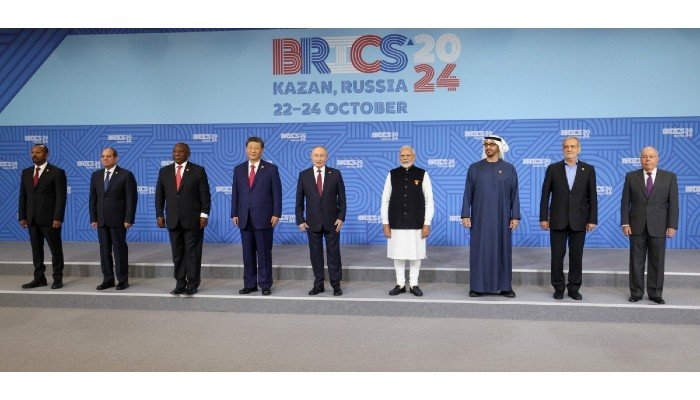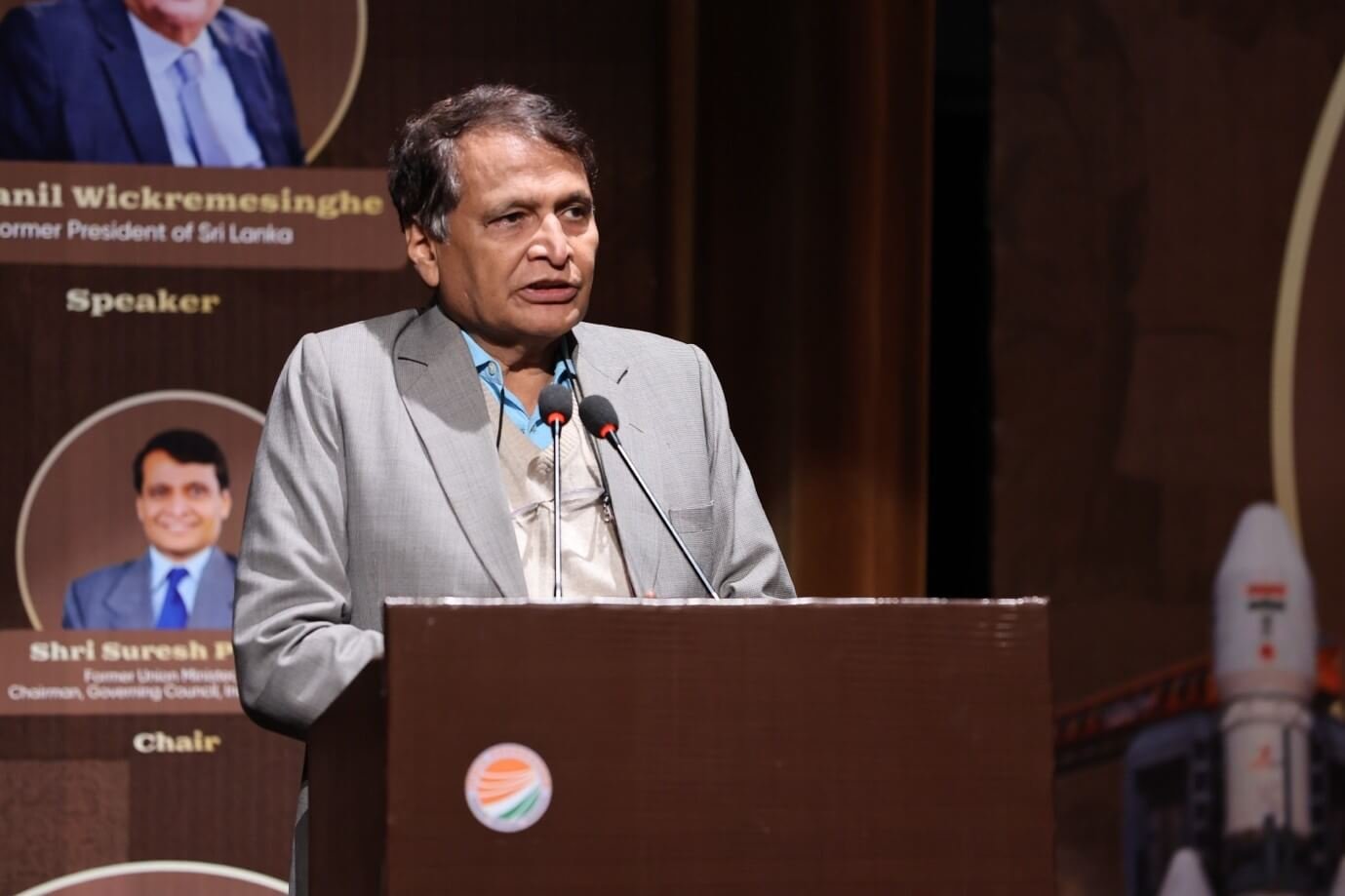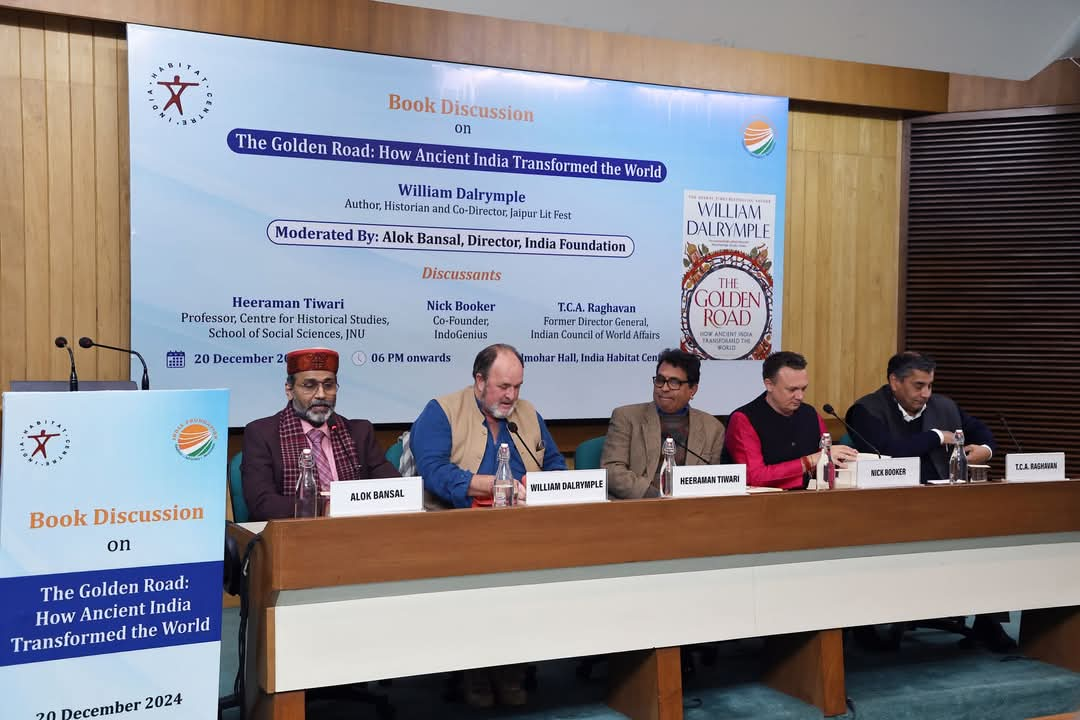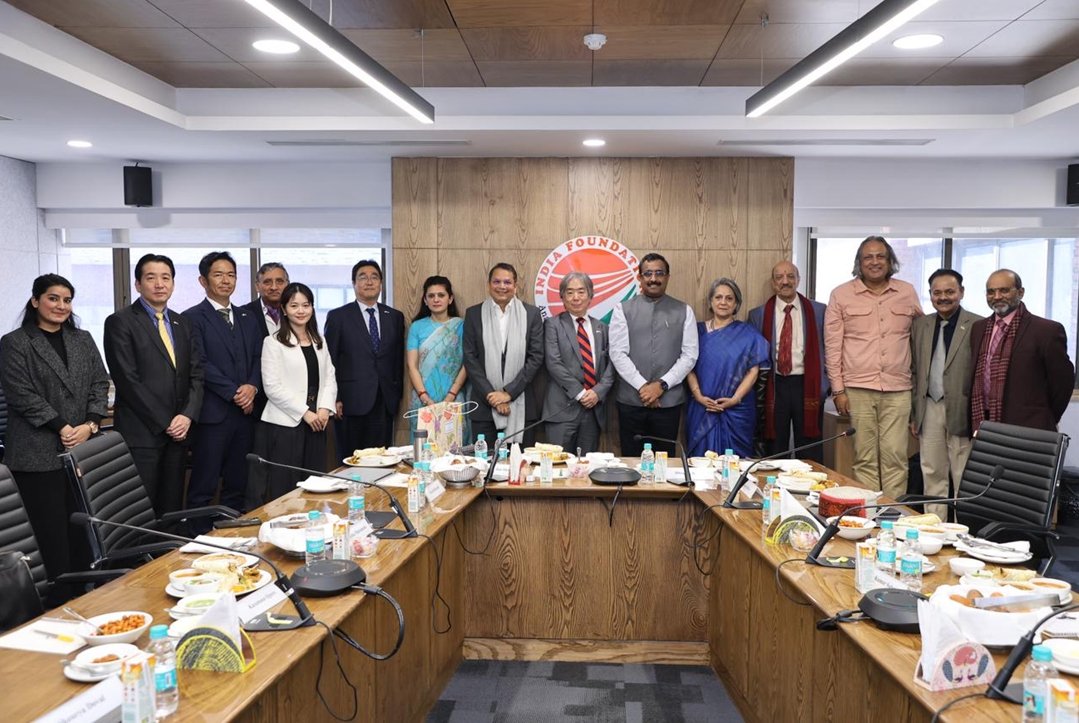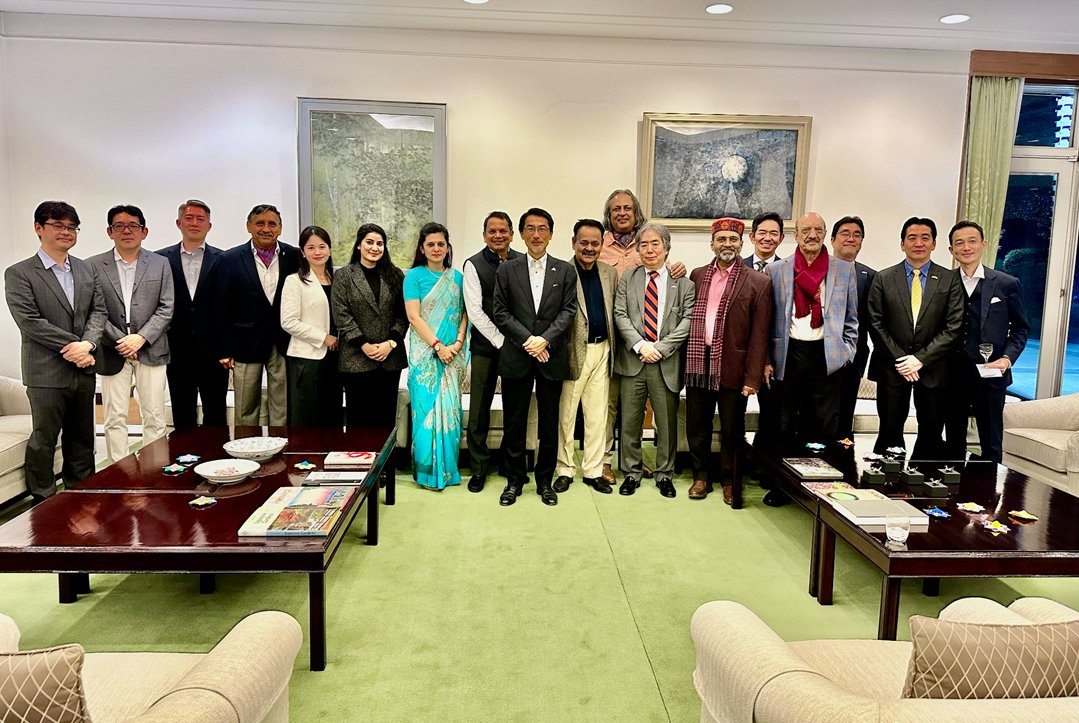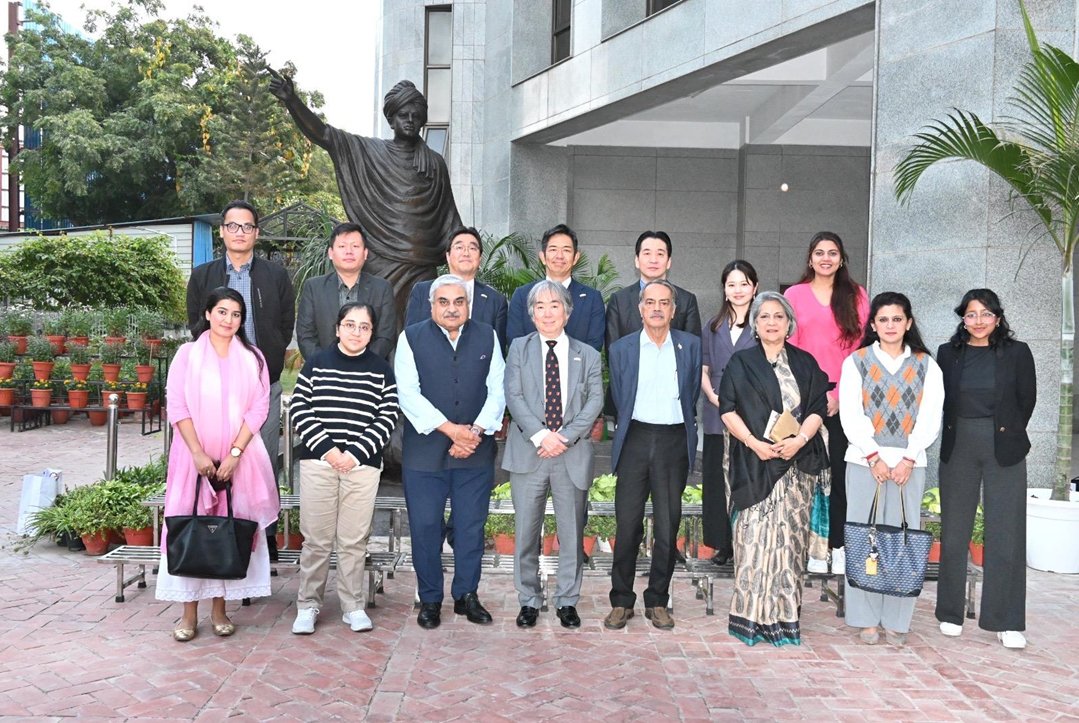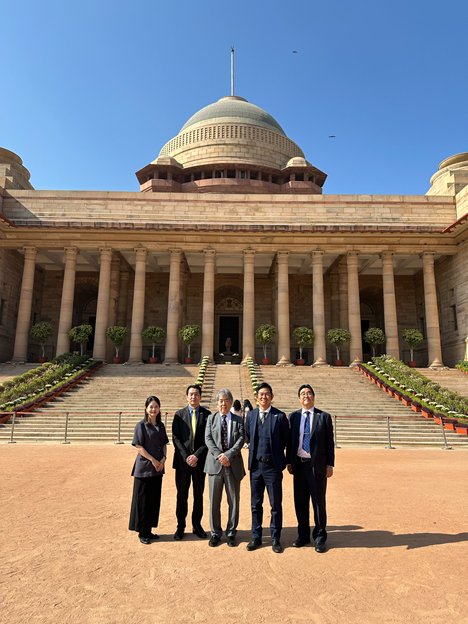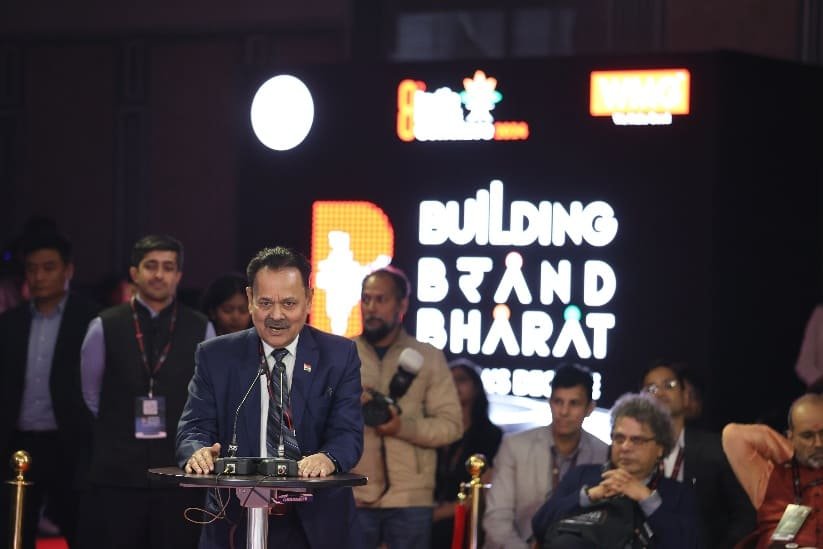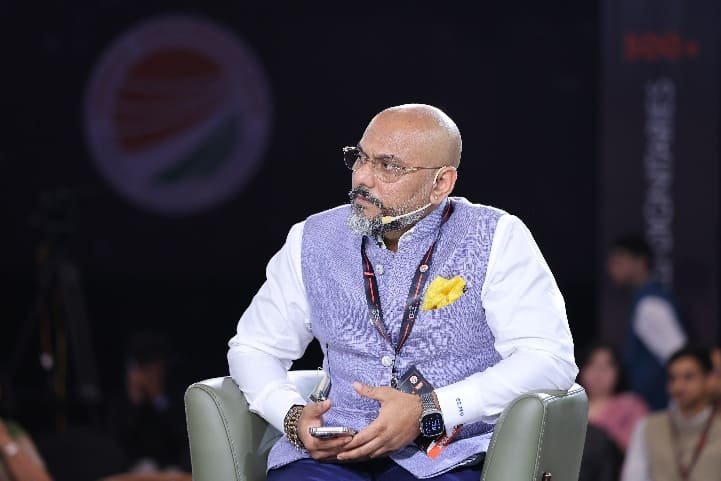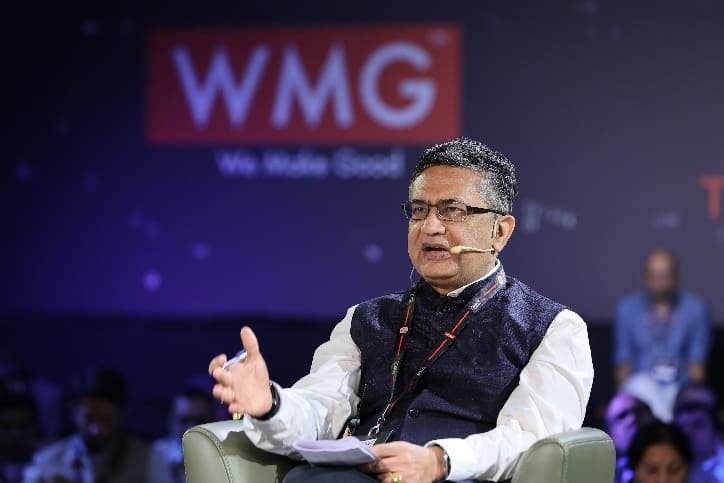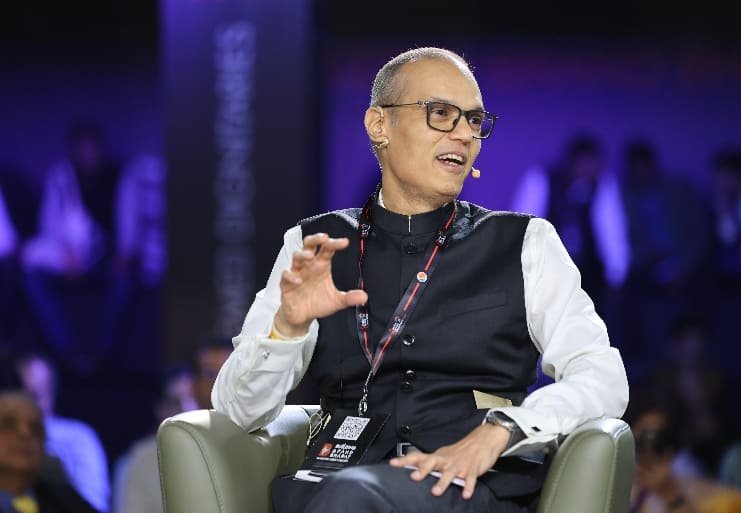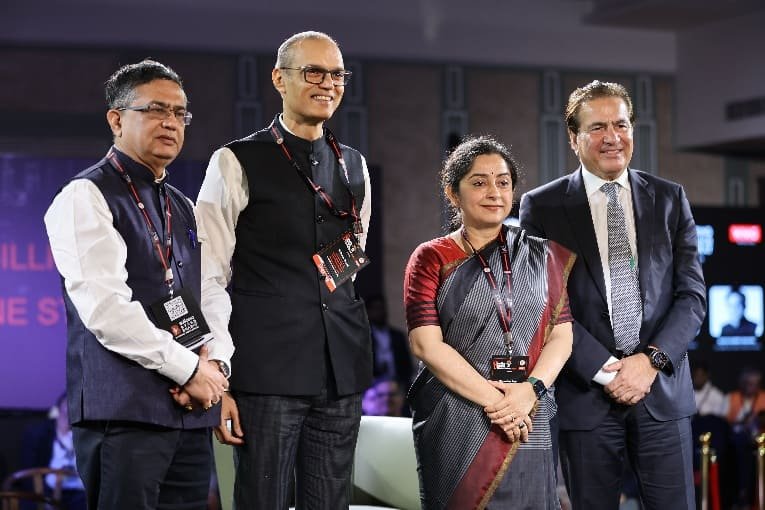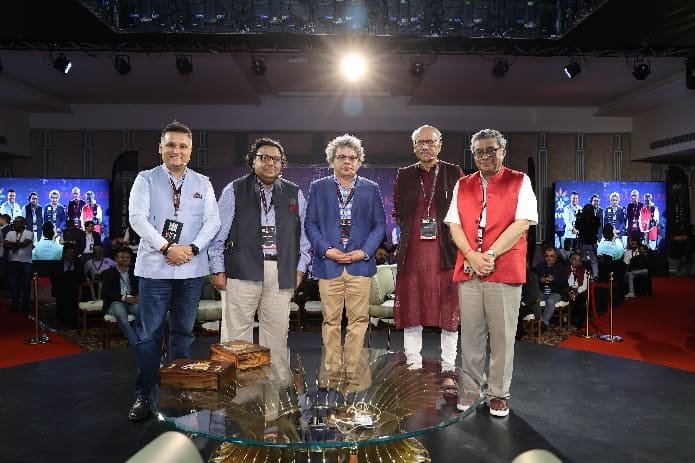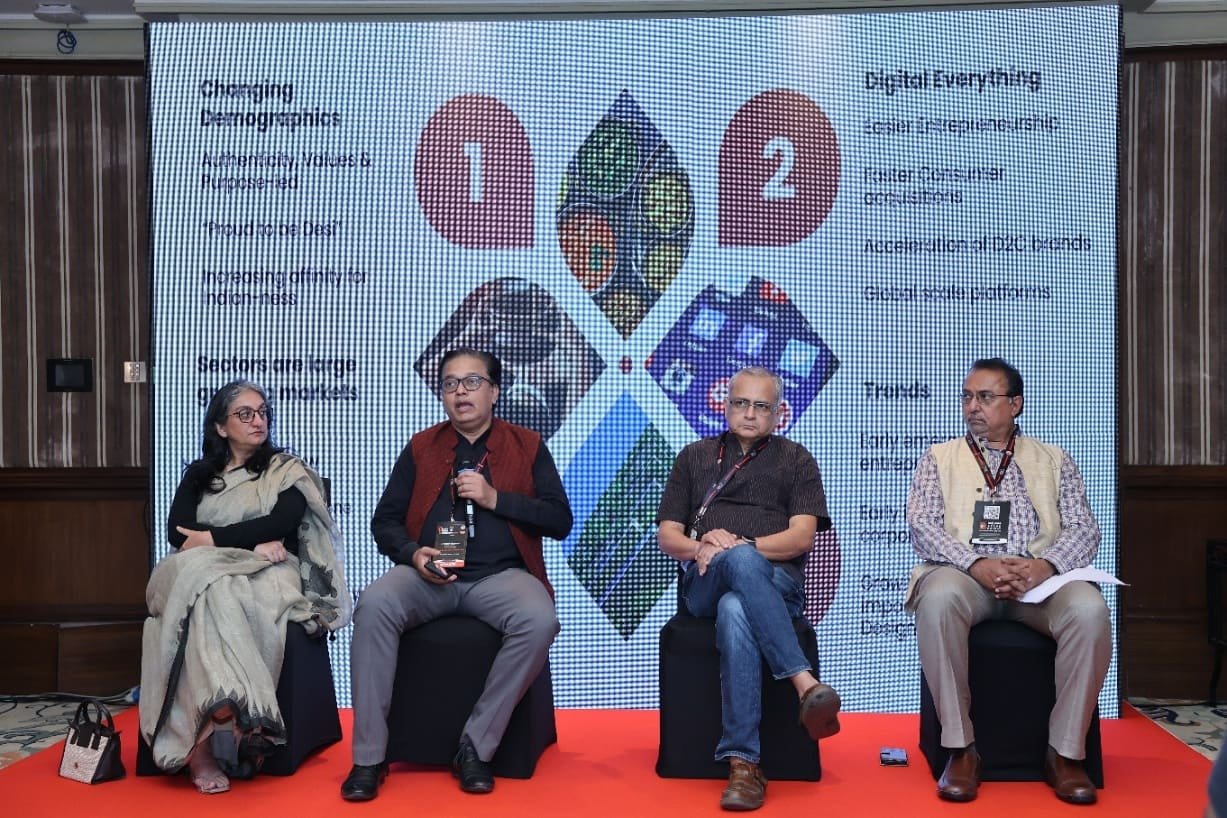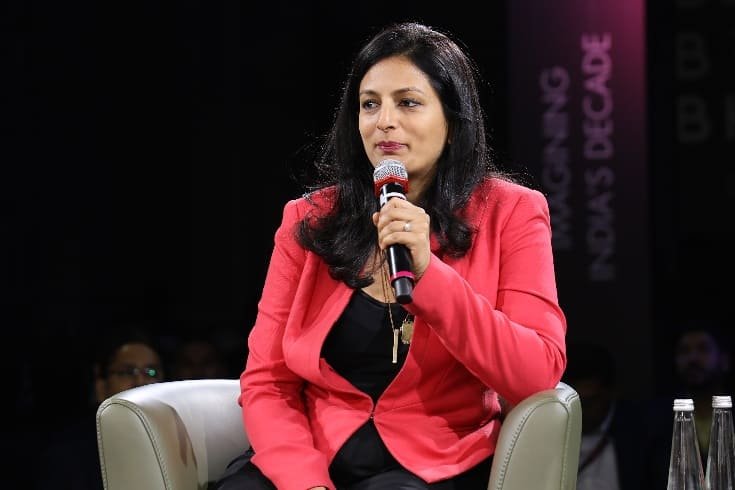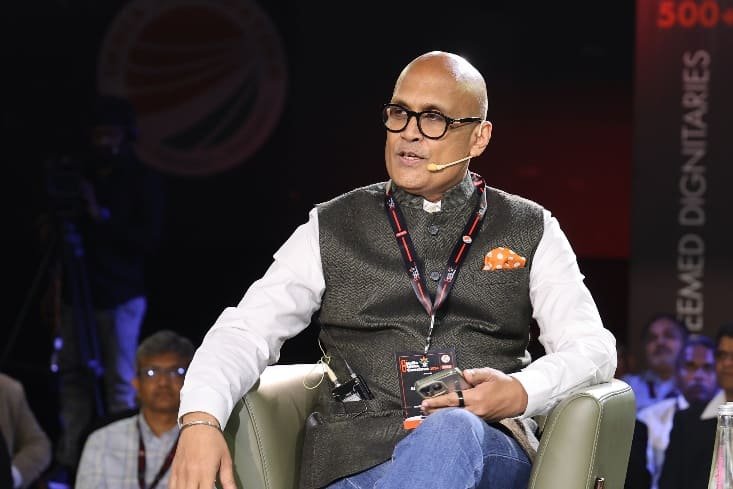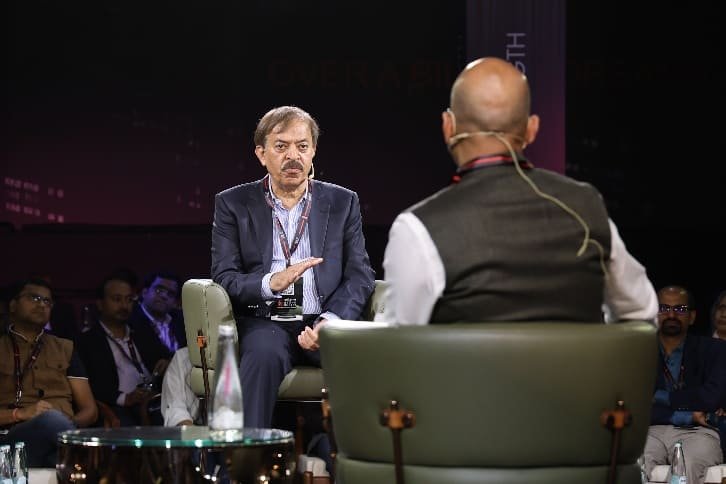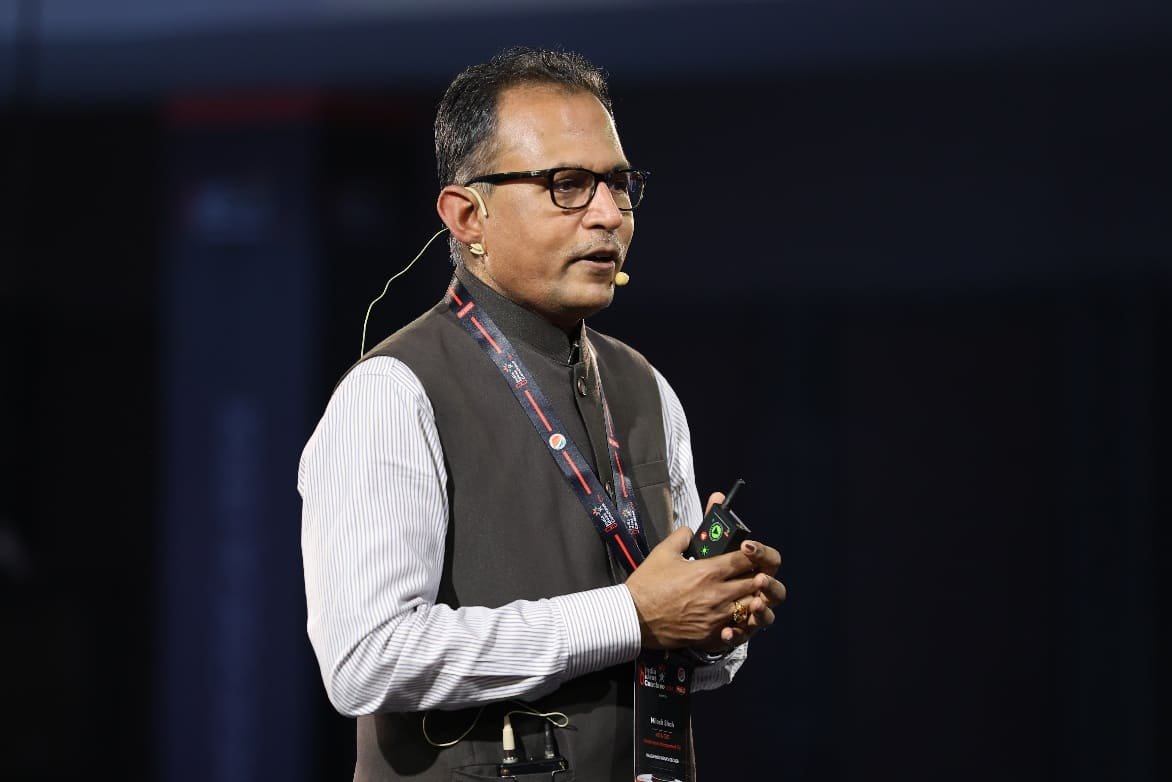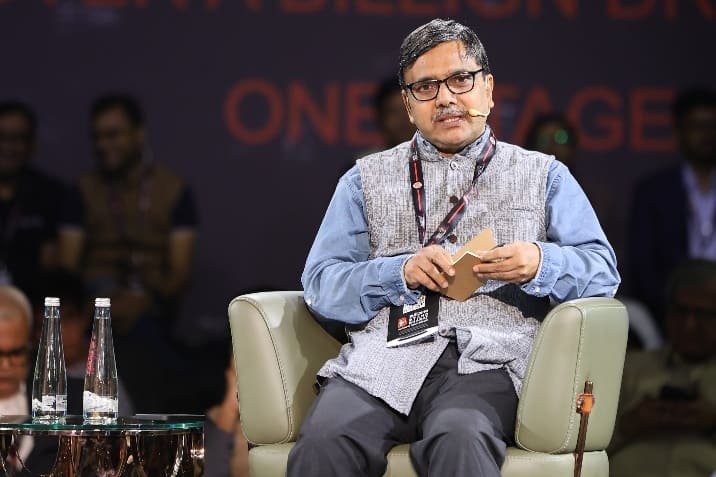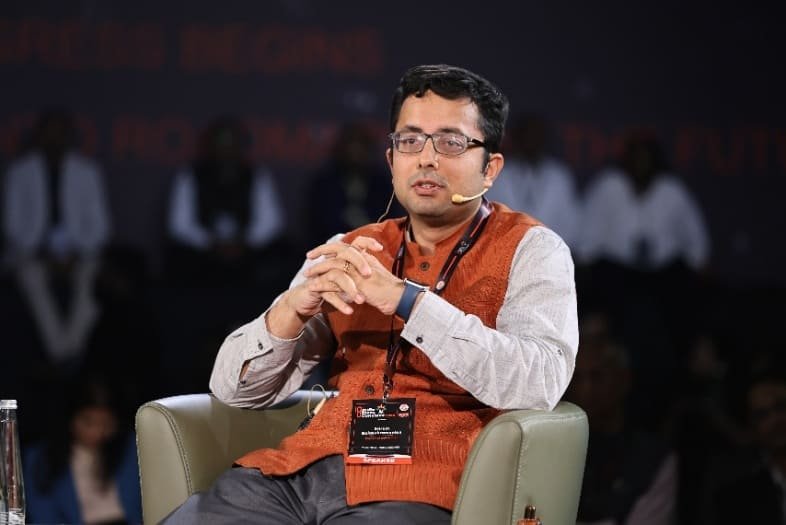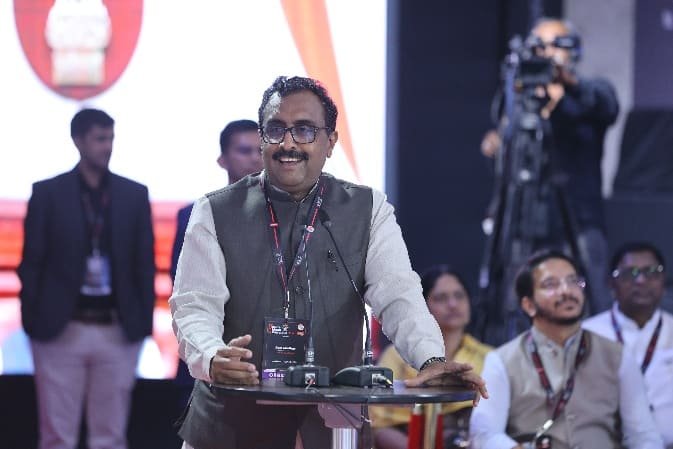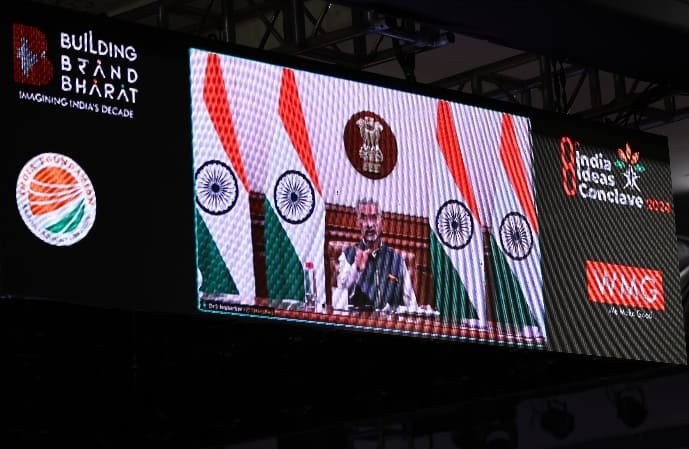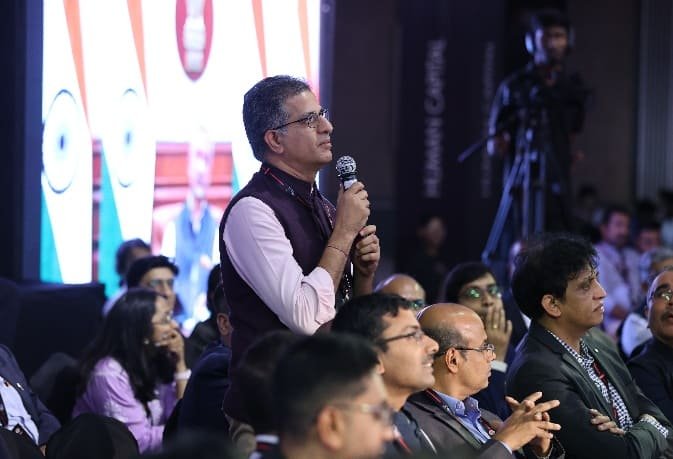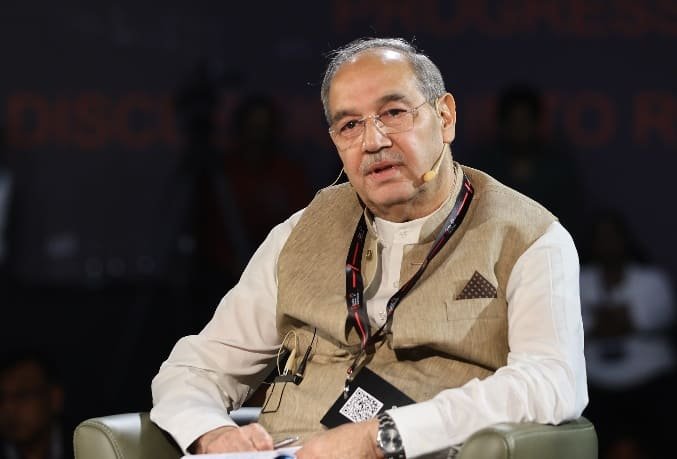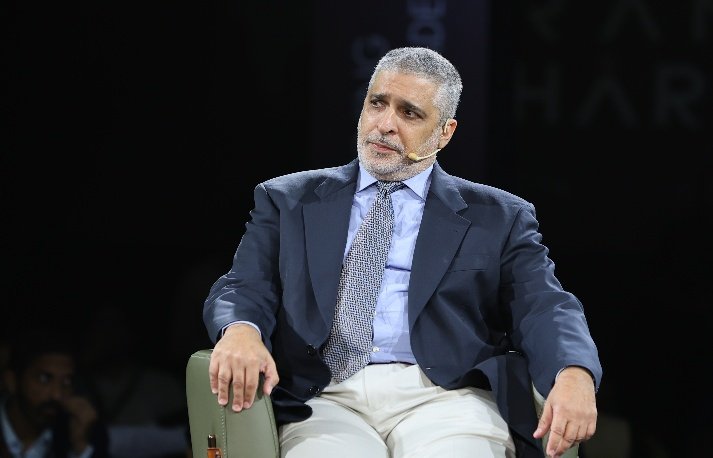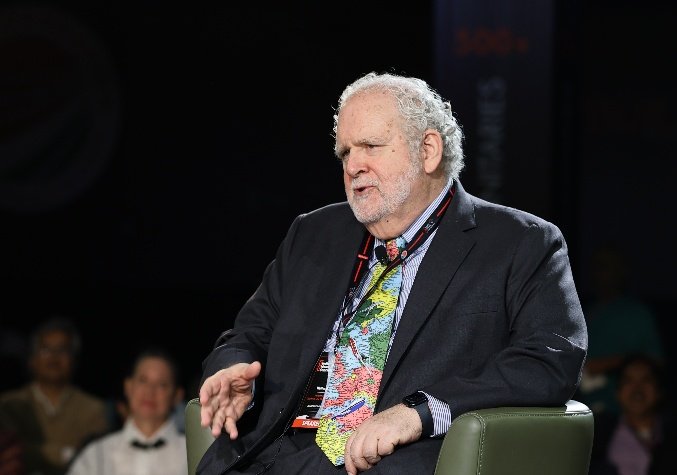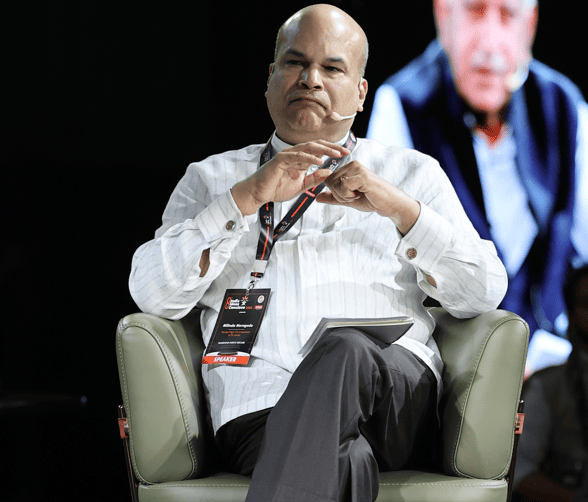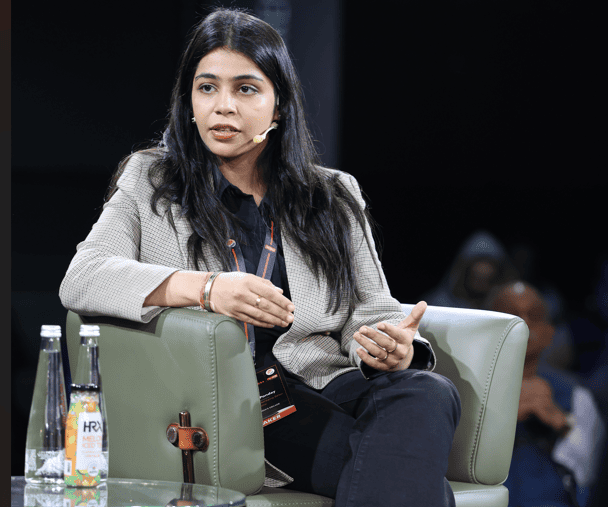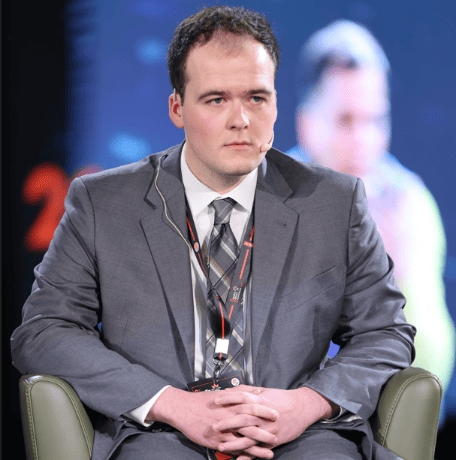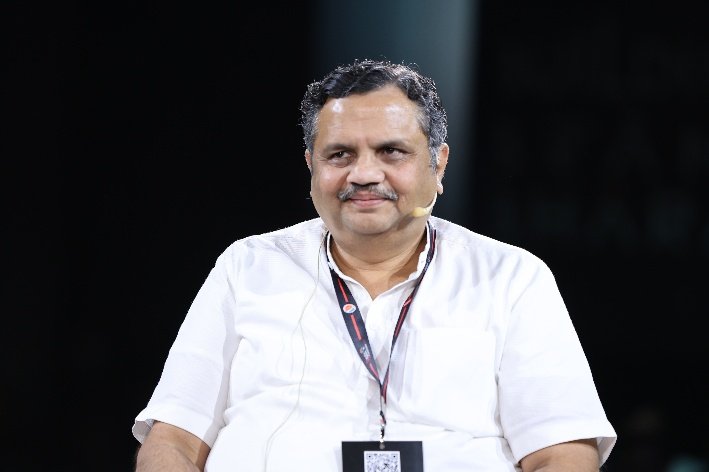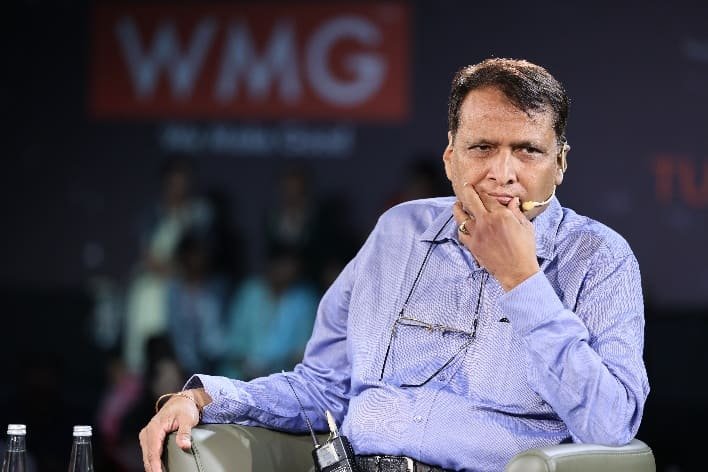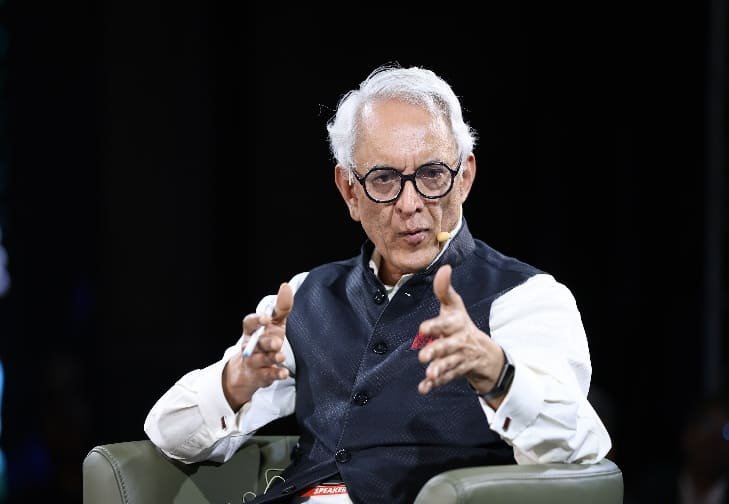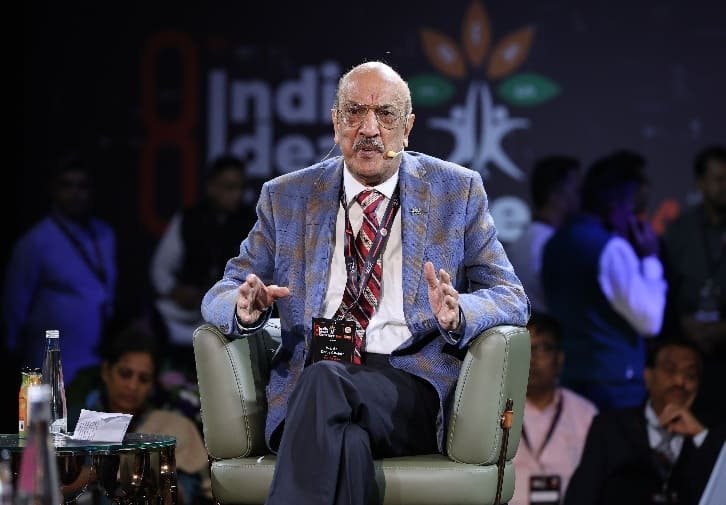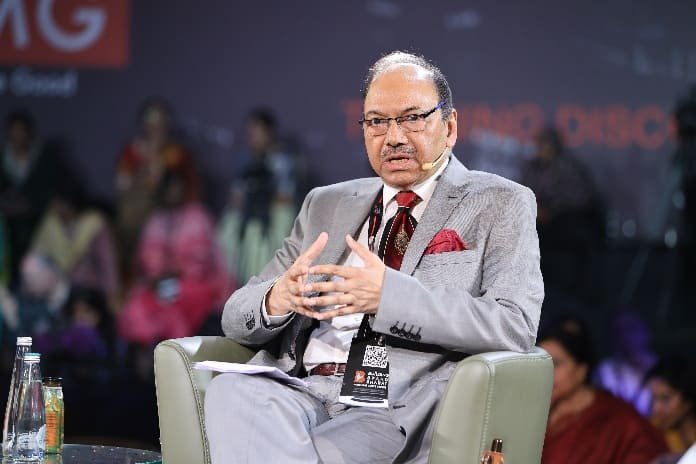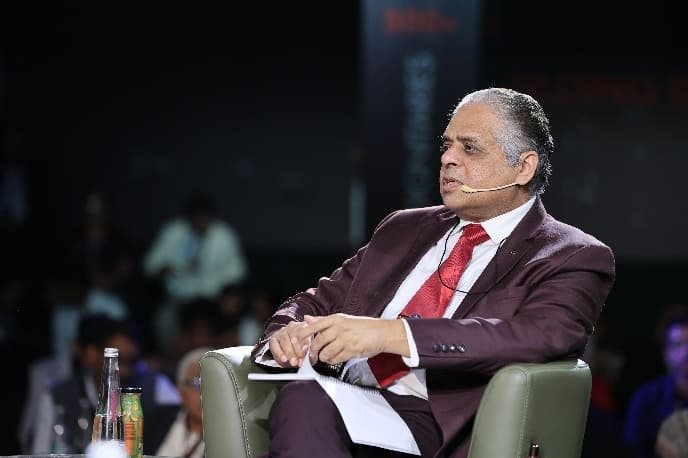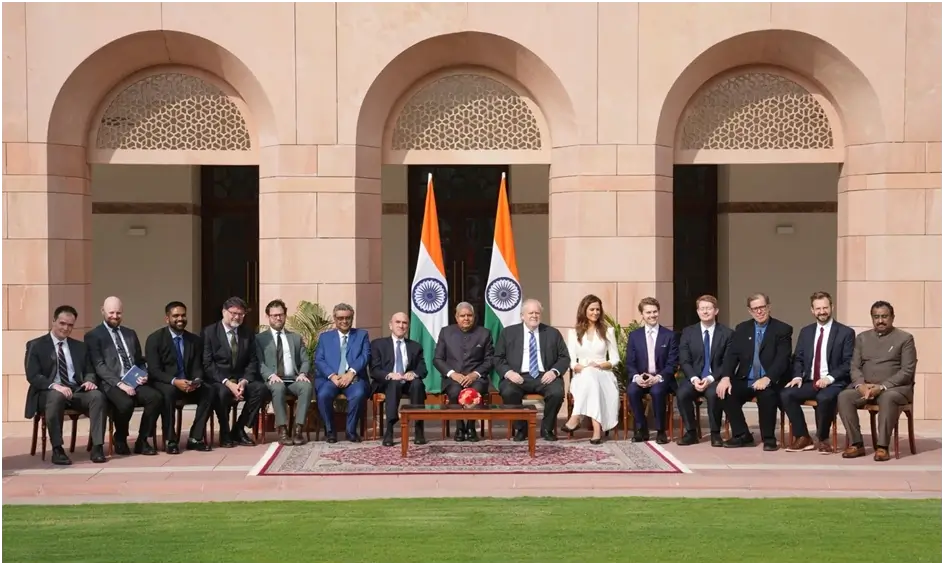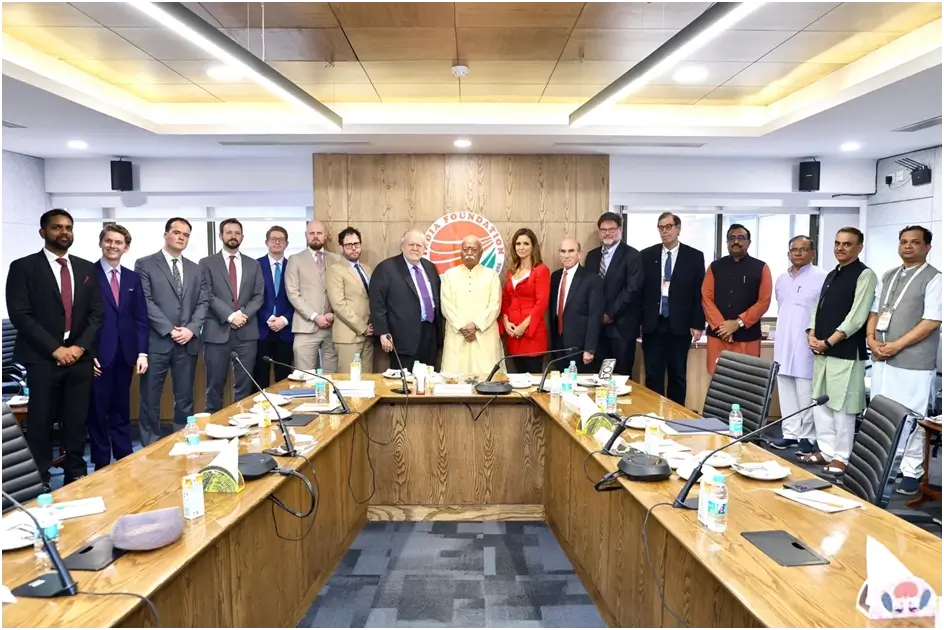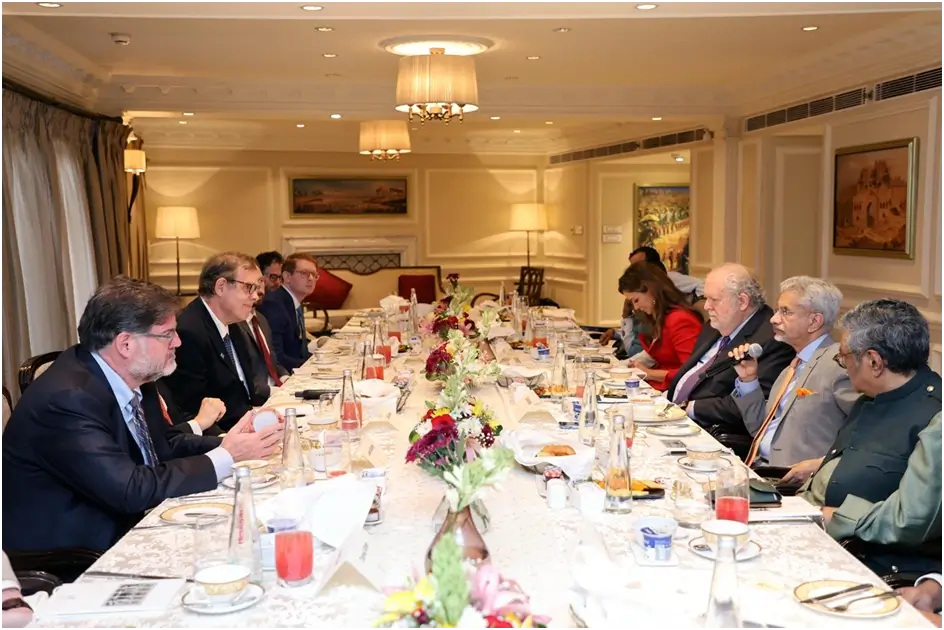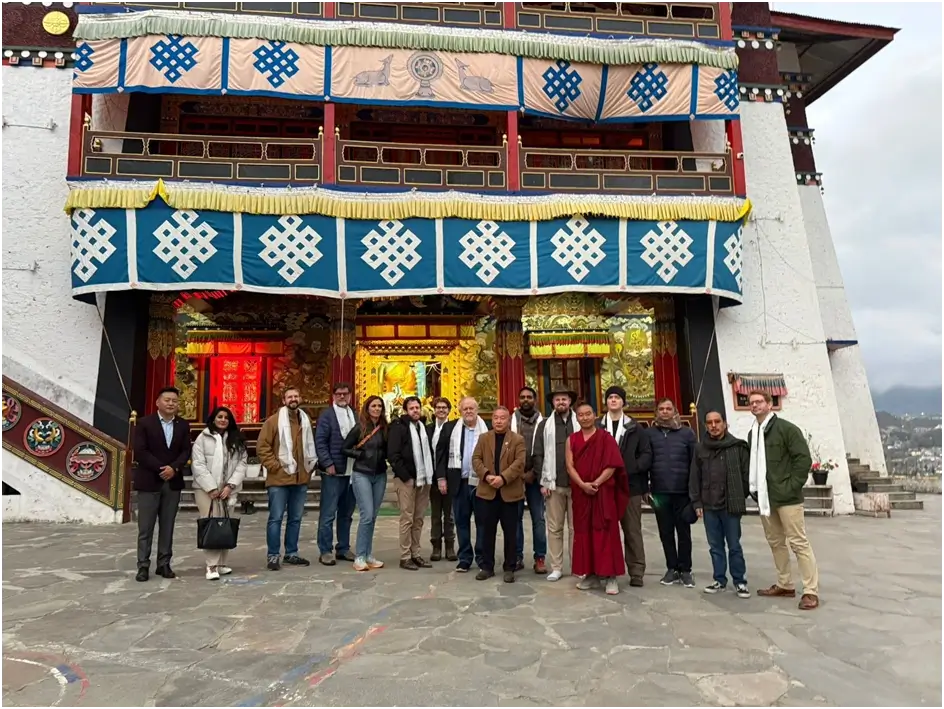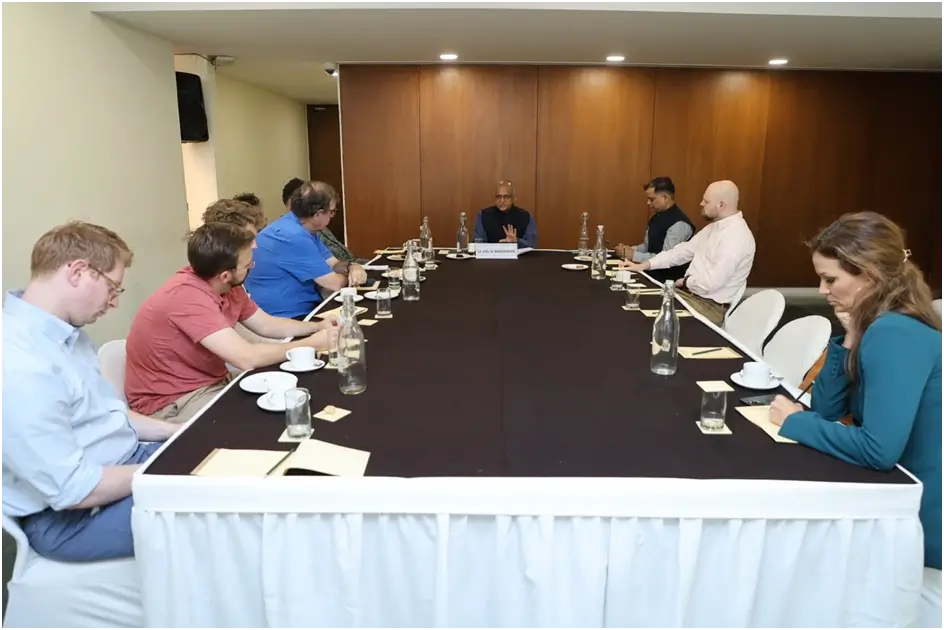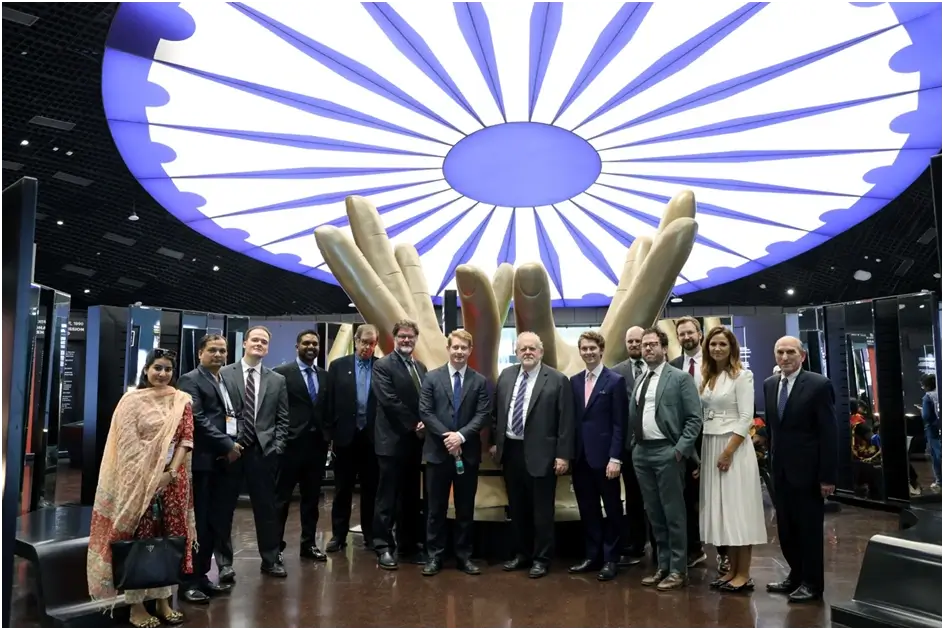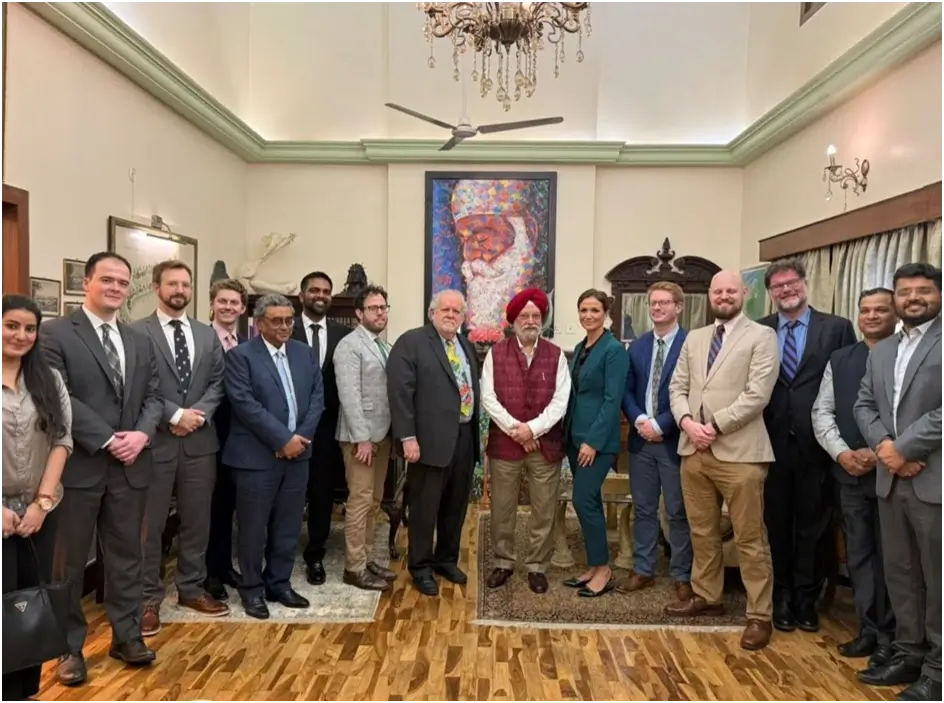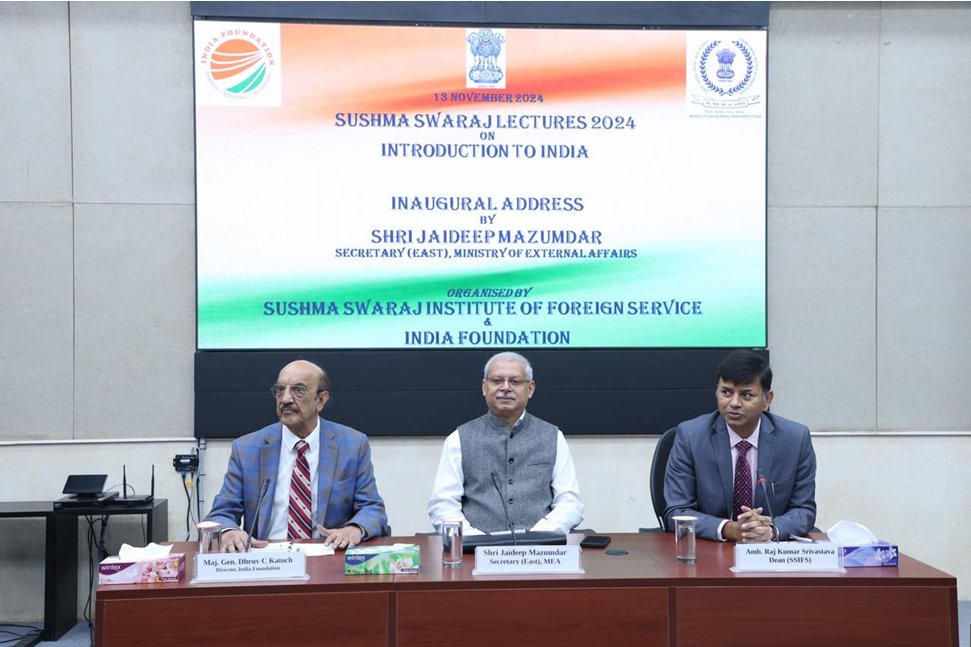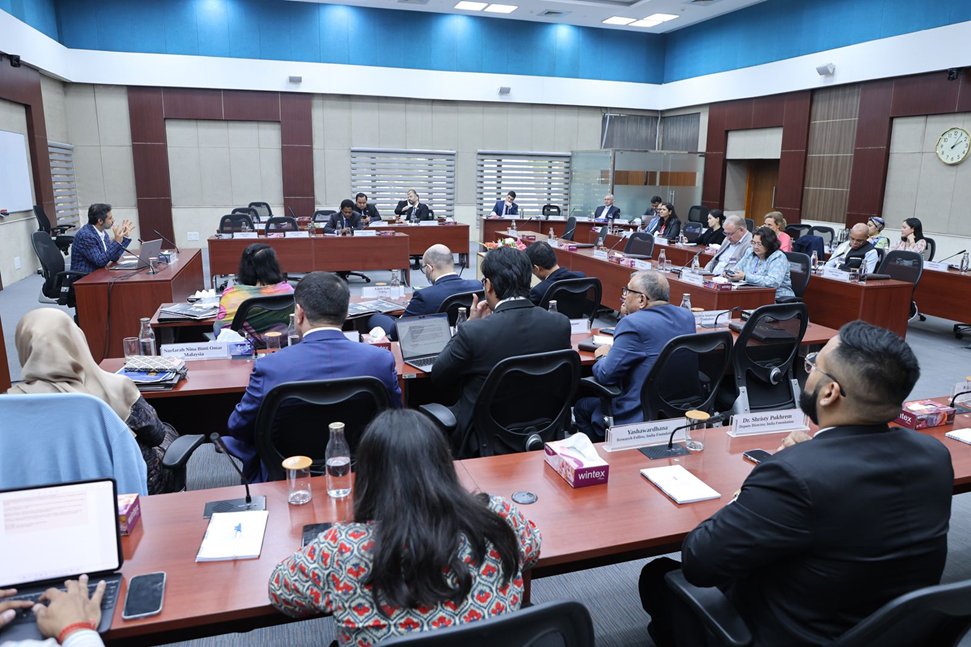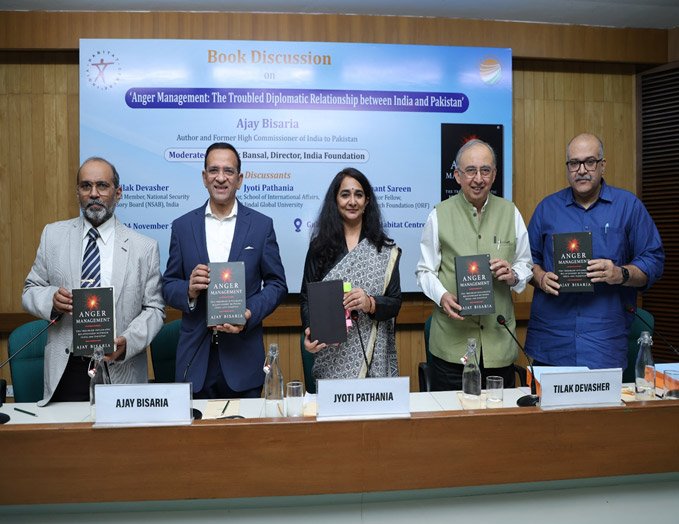In July 1944, 730 delegates from 44 countries gathered in Bretton Woods, New Hampshire, USA, to regulate a new post-World War II monetary and financial order. At that time, due to the ongoing Second World War, much of Europe, Asia, and Africa lay in ruins, and massive reconstruction was needed. The conference discussed bringing Europe and Asia back into the international economy, with the primary objective of promoting faster growth through increased integration of the world economy. It also discussed the importance of trade liberalisation, open payment systems, and institutional oversight. This led to the establishment of the International Bank for Reconstruction and Development (IBRD) and the International Monetary Fund (IMF) to facilitate international commercial and financial relations.
The IMF, formed on 27 December 1945, was tasked with overseeing international monetary arrangements. Guidelines and rules for trade were provided by the General Agreement on Tariffs and Trade (GATT), concluded in Geneva in 1947[i]. GATT set the rules for international trade for nearly 50 years until it was replaced by the World Trade Organisation (WTO) in 1995.
The Bretton Woods Conference paved the way for currency convertibility and a more open trading system, which stimulated economic growth, increased economic interdependence among nations, and underscored the benefits of international cooperation on economic issues. The institutions, founded to promote faster growth through improved integration of the world economy, achieved their objective to a remarkable extent, and the fifty years (1950-2000) saw more rapid growth than the previous fifty years (1900-1950). The Economic Recovery Act, passed by the US Congress in 1948 and signed by President Truman to become law, became known as the Marshal Plan. It provided USD 13.3 billion over the next four years to aid Western Europe in rebuilding their economies. Thisaid was conditional on recipients’ agreeing to a timetable for liberalising their trading relations. It provided markets for American goods, created reliable trading partners, and supported the development of stable democratic governments in Western Europe.[ii]
Except for Western Europe and a few other countries, a significant part of the world did not benefit from the fruits of economic development in the same measure. This was partly because many countries were under colonial rule and only now were emerging as free nations. The European colonisation of the world, which started sometime in the sixteenth century, had colonised many regions of Africa, Asia, and the Americas by the nineteenth century. During this period, the Western colonialists imposed a Eurocentric worldview on the colonised cultures.[iii] When World War II ended, the colonial edifice built by the Western colonial powers began to crumble in the face of freedom movements across the globe. Within a few decades, all the colonised countries achieved freedom. However, the economic recovery that Western Europe experienced as a result of the initiatives taken at the Bretton Woods Conference did not spread to the former colonies because the initiatives taken for economic rejuvenation were designed for Western Europe. Hence, the recovery was primarily restricted to the Western democracies. While colonialism was a thing of the past, in terms of global economic policies, it was the US which called the shots. It was a US-led world order, which could be called a Bretton Woods world order. The economic policies formulated for the world primarily reflected the Western worldview and were designed to serve Western interests.
The G7
In 1973, the foreign ministers of four of the world’s wealthiest countries—the US, Germany, France, and the United Kingdom—met informally to discuss trade and financial matters. Later, this group was enlarged to include Japan and Italy to form the Group of Six (G6). The first summit meeting of the G6 was held in 1975 in France to address pressing economic concerns, which included inflation and a recession caused by the oil embargo placed by the Organisation of the Petroleum Exporting Countries (OPEC). In 1976, Canada joined the group to form the Group of Seven (G7).[iv] From 1998 to 2014, the Group became G8 with the entry of Russia, but Moscow’s annexation of Crimea in March 2014 resulted in its indefinite suspension, and the group is now G7.
While the G7 is an informal bloc, its leaders meet annually to discuss global economic governance, international security, and other issues such as climate change and AI. The EU Commission President and European Council President also attend the annual G7 Summit. In addition, high-ranking G7 and EU officials meet throughout the year. All the participants are wealthy democracies, and the forum’s small and relatively homogenous membership promotes collective decision-making. The GDP of the member countries (excluding the EU) is a substantial 43 per cent of the global GDP. They have about 10 per cent of the worldwide population but hold about 50 per cent of its wealth. While lacking a legal or institutional basis, the G7 continue to wield significant international influence. However, with the rise of other economies, the share of the G7 is showing a declining trend. It has fallen to its present level from its earlier 70 per cent three decades ago and will fall further as other economies, such as India, rise. With a changing world order, the Bretton Woods system is increasingly being challenged by other groupings, such as BRICS, to reflect the changing geo-economic realities.
The Dollar Hegemony
With the Bretton Woods system and its institutions, such as the World Bank and the IMF, in place, global economic transactions were linked to the US dollar, which in turn was linked to the value of gold. This US commitment laid the foundation of the international monetary system. In August 1971, US President Richard Nixon ended the dollar convertibility to gold, and major currencies began to float against each other. The oil shocks of the 1970s and the decision to delink the US dollar from gold profoundly impacted the US and the global economies. Against this backdrop, the Nixon administration cemented a deal with Saudi Arabia. The US dollar would be the medium of sale for all Saudi oil sales in return for Washington’s commitment to supply military equipment to Saudi Arabia and protect its national security. Money from the sale of oil would be funnelled back into the United States in treasury bond markets. This kept the dollar stable and promoted its use in oil and commodity trading, giving rise to the term petrodollar and strengthening its position as the world’s key reserve, financing and transactional currency.[v] However, bilateral transactions are increasingly taking place using local currencies, which has caused questions to be raised about the dollar’s decline.
BRICS
The acronym BRICs came to be used in economic writings to refer to Brazil, Russia, India, and China, the four countries that had formed an intergovernmental organisation which held its first summit in 2009. When South Africa joined the organisation in 2010, it became known as BRICS. In 2024, the BRICS was expanded to include Egypt, Ethiopia, Iran, and the United Arab Emirates. Two other countries were also invited to join: Argentina and Saudi Arabia. Argentina later declined the invitation, and Saudi Arabia has yet to accept formally. The expanded group is referred to as the ‘BRICS+’. The Kazan Summit of 2024, hosted by Russia, reportedly agreed to create a new category of BRICS countries. As per media reports, Algeria, Belarus, Bolivia, Cuba, Indonesia, Kazakhstan, Malaysia, Nigeria, Thailand, Turkey, Uganda, Uzbekistan and Vietnam were offered membership, but no further details are available.[vi]
When BRICS was founded in 2009, the underlying idea was that as an informal grouping of emerging economies, it could influence the policies initiated by international institutions that were overly dominated by Western powers whose interests they served to the detriment of developing countries. They sought an alternative to what was perceived as the dominance of the Western viewpoint in major multilateral groupings, such as the World Bank, the Group of Seven (G7), and the UN Security Council. Thus, the thrust was coordinating its members’ economic and diplomatic policies, creating new financial institutions, and reducing dependence on the U.S. dollar. However, this approach had inherent contradictions. The countries have diverse interests and independent foreign policies that reflect on their policies while dealing with the United States and the stand they take on issues such as the Russia-Ukraine war, the Israel-Hamas war and other conflicts. Their shared interests include increasing economic development, focusing on multilateralism, opposing non-UN sanctions, and advocating for global governance reforms.[vii] Recently, emphasis has also been laid on creating alternate global finance systems to reduce dependency on the US dollar.[viii]
A significant achievement of the BRICS is the founding of the New Development Bank (NDB) in 2014. The NDB provides development funds to countries as an alternative to the World Bank and the IMF. The group’s expansion in 2024 indicates growing economic and demographic heft, enabling it to exert more significant influence on global financial systems and issues such as climate change and clean energy.
Along with the founding of the NDB, the Contingent Reserve Arrangement (CRA) was also agreed upon. A treaty to that effect was signed in July 2014 and ratified by the BRICS countries at the Summit held in July 2015. The CRA protects member countries against global liquidity pressures. It is a framework for providing support through liquidity and precautionary instruments in response to actual or potential short-term balance of payments pressures.
The NDB and the CRA were designed as alternatives to the Bretton Woods arrangement because it was perceived that institutions like the World Bank and the IMF were failing to meet the needs of poorer nations. Commenting on the Bretton Woods system, UN Secretary-General António Guterres pithily remarked: “Rich countries created this system to benefit rich countries.” While the NDB provides easier access to funds than the World Bank, it is restricted to its members. Its lending focuses on clean energy, transportation, sanitation, and social development. Since its operations began in 2016, the NDB has approved over $32 billion for ninety-six projects. While this sum is not insignificant, the World Bank lends far more. In fiscal 2023 itself, the World Bank lending was USD 72.8 billion.[ix] In terms of its sheer scale of operations, the NDB cannot replace the World Bank. Also, its ambitions to redesign the global financial system have fallen short, as it maintains many of its competitors’ practices. The NDB and CRA are meant to mimic the World Bank and IMF, respectively, so that, through alternative lending institutions, South-South cooperation could be reinvigorated, and dependence on the World Bank and IMF could be reduced. That has not happened.
BRICS+ is also not a homogenous bloc. Significant tensions exist among the original members, India and China, and between newer members, such as Egypt-Ethiopia and Saudi Arabia-UAE (should the former accept the invite to join the bloc). This makes coordinated action on global issues, such as the Russia-Ukraine war, and reforming existing institutions, such as expanding the UN Security Council, challenging. Economic and political instability in member countries also impacts BRICS cohesiveness. China is experiencing an economic slump, while Brazil and South Africa have experienced collapsing state capacity, yearslong recessions, chronic corruption, and crumbling infrastructure in the past decade. The push to enlarge the bloc is also fraught with challenges. Russia and China favour expansion, while India and Brazil are more hesitant, considering their warm relationship with the US and fearing a dilution in their influence in the bloc. While Russia may desire BRICS to head in a more strongly anti-West direction, there will be resistance from India, UAE, Brazil and Saudi Arabia as and when it joins the bloc. As Boris Bondarev, former Russian diplomat to the United Nations, told the Washington Post in 2023: “Nobody in this bloc is willing to put themselves in the position that Russia is currently in, as an open adversary of the West and the United States, risking armed confrontation.”[x]
However, the BRICS will continue to expand. Many analysts believe that a growing BRICS+ could undermine the Western-led international order. Others believe that the BRICS’s ambition to create its currency and develop a workable alternative to existing institutions faces insurmountable challenges. The jury is still out. One thing, though, is certain: The group will also face pushback from developed nations. How it navigates the headwinds it will encounter will determine its heft in the coming years.
The Dollar Question
The BRICS countries have serious concerns about the US dollar’s primacy in international trade, which exposes them to Western sanctions. They advocate de-dollarization and increased trade in local currencies or a potential common BRICS currency. A BRICS currency is unlikely for the present, as it would require significant political compromises, including a banking union, a fiscal union, and general macroeconomic convergence. The dollar is still used in over 80% of global trade and is favoured as a stable currency. It would be difficult for the BRICS countries to develop an alternative that could have the world’s trust.
The Biden administration has downplayed talk of de-dollarization. National Security Advisor Jake Sullivan said that Washington doesn’t see BRICS as a geopolitical rival, while Treasury Secretary Janet Yellen has largely dismissed efforts to move away from the dollar. The general view in Western capitals is that the BRICS countries’ ambitions are exaggerated, and internal challenges within the grouping hamper any real threat to Western economic health.[xi]
However, doubts and concerns persist, with some Western analysts stating that anti-West sentiment is increasing and that the West needs to reform financial institutions. Some scholars also opine that the BRICS de-dollarization efforts could eventually undermine the dollar’s strength and, thus, the health of the U.S. economy. The prevailing sentiment is that “Ignoring BRICS as a major policy force—something the U.S. has been prone to do in the past—is no longer an option. “[xii]
President-elect Donald Trump also expressed that concern on his social media, TruthSocial, on 30 November. “The idea that the BRICS Countries are trying to move away from the Dollar while we standby and watch is OVER. We require a commitment from these Countries that they will neither create a new BRICS currency nor back any other currency to replace the mighty US Dollar, or they will face 100% tariffs and should expect to say goodbye to selling into the wonderful US Economy.”[xiii] This threat will undoubtedly put a hold on any immediate plans to replace the US dollar, but the fact that Mr Trump was compelled to make it indicates high levels of concern in the US about the possibility of the US dollar being replaced.
Since the end of the Second World War, the US dollar has been the world’s most used currency. It is the currency of choice for international trade, especially for major commodities such as oil. Higher dollar demand enables the US to borrow money at a lower cost and helps keep its huge external debt down[xiv]. While the rise of other currencies, such as the Euro, has eroded the US advantage somewhat, the dollar remains central to the global payments system. It increases the power of US financial sanctions.
But the pushback against the dollar has started. Today, India buys oil from Russia without using the dollar. So does China. However, developing a BRICS currency is far from the horizon. The dollar is unlikely to be overtaken as the world’s leading reserve currency anytime soon, but it will slowly come to share influence with other currencies. This trend will be aggressively resisted by the US. Some analysts believe that what we are witnessing today is the first sign of the end of the American empire. That remains to be seen. However, in the final analysis, BRICS will prioritise its efforts to achieve greater financial inclusivity in the world order. The coming decade will be interesting to watch.
Author Brief Bio:Maj. Gen. Dhruv C. Katoch is Editor, India Foundation Journal and Director, India Foundation.
References:
[i]Bayoumi, Tamim. “The Postwar Economic Achievement.” IMF eLibrary, Jan. 1995, https://doi.org/10.5089/9781451952643.022.A013.
[ii] Tamim Bayoumi, The Postwar Economic Achievement, available at https://www.scribd.com/document/760037343/022-article-A013-en
[iii] Rajiv Malhotra and Aravindan Neelakandan, Breaking India: Western Interventions in Dravidian and Dalit Faultlines, Amaryllis, 2011, p8.
[iv]CFR.org Editors. “What does the G7 do?” Council on Foreign Relations, 24 June 2024, www.cfr.org/backgrounder/what-does-g7-do.
[v]Achhangani. “Is The End of the Petrodollar Near? – Atlantic Council.” Atlantic Council, 21 June 2024, www.atlanticcouncil.org/blogs/econographics/is-the-end-of-the-petrodollar-near.
[vi]Curtis, John. “The BRICS Group: Overview and Recent Expansion.” House of Commons Library, 11 Nov. 2024, commonslibrary.parliament.uk/research-briefings/cbp-10136/.
[vii]Ferragamo, Mariel. “What Is the BRICS Group and Why Is It Expanding?” Council on Foreign Relations, Council on Foreign Relations, 18 Oct. 2024, www.cfr.org/backgrounder/what-brics-group-and-why-it-expanding.
[viii] Ibid. 4
[ix]World Bank. “World Bank Annual Report 2023.” World Bank Lending, 2023, thedocs.worldbank.org/en/doc/a60d0e2b975a3b94bc5cfbaa8e1cb269-0090012023/related/WBAR23-App-FY23-Lending-Presentation.pdf.
[x] Ferragamo, Mariel. “What Is the BRICS Group and Why Is It Expanding?” Council on Foreign Relations, Council on Foreign Relations, 18 Oct. 2024, www.cfr.org/backgrounder/what-brics-group-and-why-it-expanding.
[xi] Ibid.
[xii] Ibid.
[xiii]Honderich, Holly. “Trump Threatens 100% Tariff on Bric Nations.” BBC, 1 Dec. 2024, www.bbc.com/news/articles/cgrwj0p2dd9o.
[xiv]Siripurapu, Anshu. “The Dollar: The World’s Reserve Currency.” Council on Foreign Relations, 19 July 2023, www.cfr.org/backgrounder/dollar-worlds-reserve-currency.

